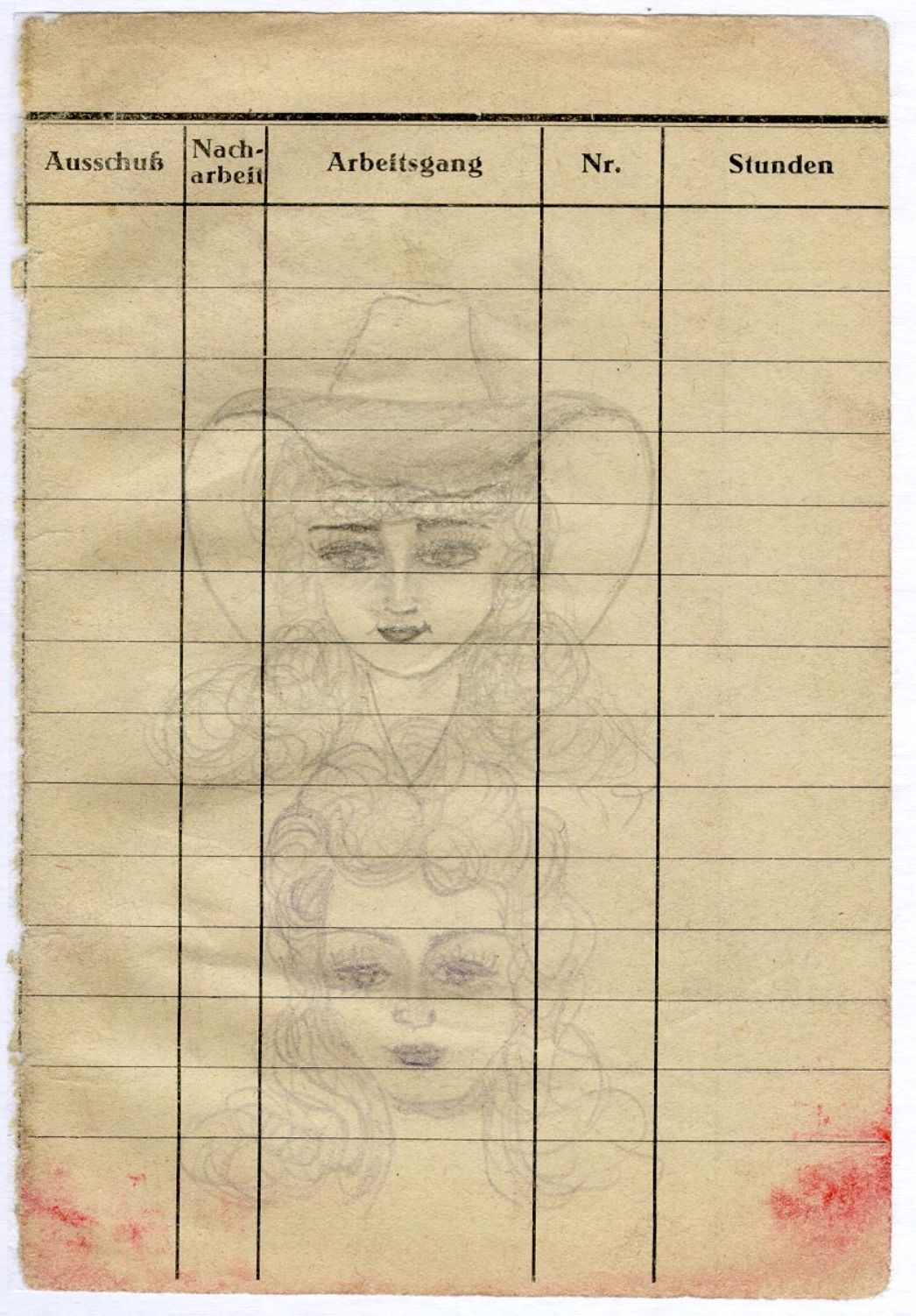
Maria Kosk had already suffered imprisonment in the Auschwitz and Ravensbrück concentration camps when she arrived at Meuselwitz, a Buchenwald subcamp, in October 1944, at the age of fourteen. The forced labour there, and the separation from her mother and sister in November 1944 after they were severely injured during an air raid, had a devastating effect on her. She did her best to process her emotional distress, her fears about her own fate, and her uncertainty about the whereabouts of her mother and sister by drawing. Her eighteen-year-old sister brought pads of delivery slips to the camp which she had obtained from an old, mute master at the factory. Along with a tiny pencil, the small slips, which were printed on one side, were a treasure. In a corner of the barrack where she was lodged, she used them to give form and expression to things that comforted her. The majority of the drawings bear no relation to everyday life in the camp.
In ever-recurring variations, Maria Kosk’s drawings depict faces of women and girls or figures wearing glamorous clothing. As in the sketches seen here, the figures are distinguished by their makeup and wavy hair; many of them wear splendid hats. Other drawings show a street scene in Warsaw, a bathing scene in summer, everyday life at school. Kosk countered her life-threatening situation with memories, dreams, and longings—which were associated with songs and the popular singers of the time—of the years preceding her imprisonment in pictorial form. The fourteen-year-old replied to the attack on beauty, humanity, human dignity, and culture she experienced in the camp with its opposite, manifested in images of beautifully attired and made-up women. The drawings are a mirror of her inner child’s world.
Biography
Maria Kosk (née Brzęcka) was born in Lobzenica in south-eastern Poland, not far from the Polish-German border, on 3 May 1930, the youngest of four sisters. In the context of the terror committed by units of the Armed SS against the citizens of Warsaw after the suppression of the Polish Home Army’s Warsaw Uprising, she was deported to the Auschwitz concentration camp along with her mother and her sisters Halina and Krystyna on 10 August 1944, when she was fourteen,. From Auschwitz they were sent first to the Ravensbrück women’s concentration camp, and a short time later to the HASAG-Werke Meuselwitz camp, a Buchenwald subcamp. Along with 1,500 women of Polish, Russian, and other nationalities, they were forced to work in shifts in a munitions factory. They lived in barracks set up for inmate labourers on the factory grounds.
On 30 November 1944, Maria’s mother and sister Krystyna were severely injured by bomb splinters during an air raid on the factory and taken back to the Ravensbrück concentration camp. Shortly before the liberation, the two managed to make their way to Sweden with the aid of a rescue operation organized by Count Bernadotte. Maria and Halina together survived the months from December 1944 to April 1945 in Meuselwitz. Having been forced to set out on a death march, they were liberated outside Prague on 8 May 1945. At the end of 1945, Maria, Halina, Krystyna, and Stanislawa Brzecka were reunited in Warsaw. Maria’s father Wincenty Brzecko, who had been conscripted for military service in 1939, never returned from the war.
After the war, Maria Kosk attended Gymnasium in Warsaw and went on to study architecture in the 1950s. In 1957 she obtained her diploma in architectural engineering and embarked on an international career. She and her family continued living in Warsaw after her retirement in 1989. From 2005 onwards, Maria Kosk was a member of the Buchenwald Concentration Camp Advisory Board of the Buchenwald and Mittelbau-Dora Memorials Foundation.
Maria Kosk died in Warsaw on 19 February 2013 at the age of eighty-two.


